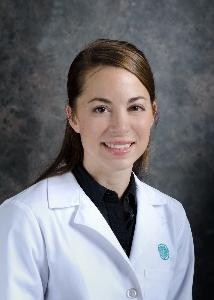CSP Team Note: We recently chatted with Dr. Melissa Schutt, a pediatric hospitalist at Levine Children’s Hospital, about the benefits of rooming-in and pediatric hospitalists. We appreciate her thoughtful answers and for taking care of our Charlotte babies!
What does rooming-in mean for the mother and baby?
The term “rooming-in” means that after delivery, the mother and baby share the same room until being discharged from the hospital. Unless there is a medical reason that requires separation, the baby and mother share the same room at all times.
The goal is for the mother and baby to establish a bond and to be viewed as a co-dependent unit that provides physical and emotional support to each other, leading to the best possible outcome. Rooming-in eliminates the artificial separation after birth and promotes early and unlimited access for both mom and baby.
What are the benefits for the mother?
The benefits of rooming-in for the mother are numerous. There are many studies that demonstrate a link between rooming-in and breastfeeding in particular. Mothers who have unlimited access to their newborns are better at recognizing infant feeding cues. They also report an improved breastfeeding experience and are more likely to exclusively breastfeed their babies for a longer period after discharge from the hospital. There are studies suggesting that women who can room-in with their infants also produce milk sooner and in greater quantities.
What are the benefits for the baby?
The newborn baby receives a lot of very important medical benefits from staying with his or her mother. Just after birth, babies who have unlimited skin to skin contact with mom have more stable body temperatures and blood sugars. They also have lower levels of stress hormones, and they breastfeed sooner and more easily. In fact, one of the “treatments” we give to newborns who are having difficulty transitioning after birth is putting them on their mother’s chest skin to skin.
In the next few days after birth, newborns who stay with their mothers soothe more quickly and more easily, take in more breast milk, and are less likely to have jaundice (yellowing of the baby’s skin).
How does it promote breastfeeding and bonding?
Mother/baby bonding is promoted by many aspects of rooming-in. A bond is initiated sooner when the baby stays in the room with their mother, and the more interaction the pair has, the sooner and better they get to know each other.
Rooming-in also allows the mother to quickly learn her baby’s feeding cues and intervene after subtle cues that may be missed by another caregiver. This allows for a calmer and more successful breastfeeding experience.
How does it make the transition of taking the baby home easier?
Parents who room in with their newborns are more likely to recognize their baby’s needs (hunger, fatigue, diaper changes) and have reported increased confidence in caring for and handling their baby upon discharge from the hospital.
In addition, babies who remain in the room with their mothers have been shown to have better sleep quality and faster development of normal sleep-wake cycles. This can lead to establishing a better sleep pattern sooner for the entire family once home.
Tell us the role of a pediatric hospitalist.
Pediatric hospitalists provide care to all babies who can stay with their mothers. They are familiar with the mother’s medical history, the birth history, and they examine newborns to ensure they receive the best care while in the hospital.
How do the pediatric hospitalist and the newborn’s pediatrician communicate? Is it something the parent facilitates or do the doctors?
The level of communication varies depending on the complexity of the patient. In most cases, a newborn discharge summary is used to communicate between the pediatric hospital team and the outpatient pediatricians. For some patients, this may be a print-out copy, and for others, the information is sent electronically to the baby’s pediatrician. This documentation includes all information required to transition from inpatient to well-child outpatient care. Occasionally, there are special complex cases, and those are communicated directly from the pediatric hospitalist nursery team to the pediatrician.
How does having an assigned pediatric hospitalist make the newborn’s hospital stay better?
The pediatric hospitalist nursery team ensures that each newborn is consistently receiving the best, most evidence-based care at all times – day and night. We partner with the neonatal intensive care unit (NICU) and pediatric resident services to provide 24-hour, in-hospital care to newborns. Changes in the care plan are communicated to the parents and other members of the medical team real-time to facilitate the best care of the baby.
What happens once you leave the hospital with your newborn?
After you are discharged from the hospital, you’ll have regular well visits at your pediatrician’s office. Newborn appointments and well-checks are more frequent during the first months with your baby to monitor growth and development. Many offices offer breastfeeding support and other ways to help with the transition for new moms.
Looking for the right pediatrician for your family? Learn more about expert newborn care at Carolinas HealthCare System and find a pediatrician affiliated with Levine Children’s Hospital.
![]()
 About Dr. Schutt
About Dr. Schutt
Dr. Schutt has practiced pediatric medicine at Carolinas Medical Center and Levine Children’s Hospital for the last nine years, including three years as a resident and six years as a pediatric hospitalist with the children’s inpatient and newborn nursery teams. She provides pediatric care to children of all ages, from birth to age 18. She is an active participant in physician resident education, in addition to supervising advanced care practitioners as they see pediatric patients in the hospital. When she’s not working, Dr Schutt enjoys spending time with her husband and very busy but adorable daughters, ages 2 and 3.
![]()
Levine Children’s Hospital
Facebook
Instagram
Twitter
Pinterest




